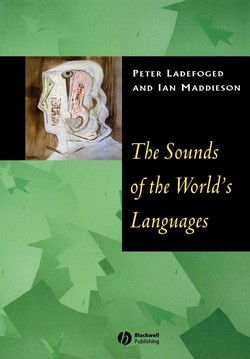Related Research Articles

The voiced alveolar approximant is a type of consonantal sound used in some spoken languages. The symbol in the International Phonetic Alphabet that represents the alveolar and postalveolar approximants is ⟨ɹ⟩, a lowercase letter r rotated 180 degrees. The equivalent X-SAMPA symbol is r\.

The open back unrounded vowel, or low back unrounded vowel, is a type of vowel sound, used in some spoken languages. The symbol in the International Phonetic Alphabet that represents this sound is ⟨ɑ⟩, and the equivalent X-SAMPA symbol is A. The letter ⟨ɑ⟩ is called script a because it lacks the extra hook on top of a printed letter a, which corresponds to a different vowel, the open front unrounded vowel. Script a, which has its linear stroke on the bottom right, should not be confused with turned script a,, which has its linear stroke on the top left and corresponds to a rounded version of this vowel, the open back rounded vowel.
The close-mid front unrounded vowel, or high-mid front unrounded vowel, is a type of vowel sound, used in some spoken languages. The symbol in the International Phonetic Alphabet that represents this sound is ⟨e⟩.

The open-mid central rounded vowel, or low-mid central rounded vowel, is a vowel sound, used in some spoken languages. The symbol in the International Phonetic Alphabet that represents this sound is ⟨ɞ⟩, and the equivalent X-SAMPA symbol is 3\. The symbol is called closed reversed epsilon. It was added to the IPA in 1993; before that, this vowel was transcribed ⟨ɔ̈⟩.

The open-mid front unrounded vowel, or low-mid front unrounded vowel, is a type of vowel sound used in some spoken languages. The symbol in the International Phonetic Alphabet that represents this sound is a Latinized variant of the Greek lowercase epsilon, ⟨ɛ⟩.
Ian Maddieson is British-American linguist and professor emeritus of linguistics at the University of New Mexico, in the United States. He has served as Vice-President of the International Phonetic Association, and Secretary of the Association for Laboratory Phonology. Maddieson is best known for his work in phonetics, and phonological typology. He spent most of his academic career at the University of California, Berkeley, where he often collaborated with Peter Ladefoged in describing the patterns of speech sounds in the world's spoken languages.
The open central unrounded vowel, or low central unrounded vowel, is a type of vowel sound, used in many spoken languages. While the International Phonetic Alphabet officially has no dedicated letter for this sound between front and back, it is normally written ⟨a⟩. If precision is required, it can be specified by using diacritics, typically centralized ⟨ä⟩.

Peter Nielsen Ladefoged was a British linguist and phonetician.

The Sounds of the World's Languages, sometimes abbreviated SOWL, is a 1996 book by Peter Ladefoged and Ian Maddieson which documents a global survey of the sound patterns of natural languages. Drawing from the authors' own fieldwork and experiments as well as existing literature, it provides an articulatory and acoustic description of vowels and consonants from more than 300 languages. It is a prominent reference work in the field of phonetics.
Bruce Hayes is an American linguist and Distinguished Professor of Linguistics at the University of California, Los Angeles.
Louis M. Goldstein is an American linguist and cognitive scientist. He was previously a professor and chair of the Department of Linguistics and a professor of psychology at Yale University and is now a professor in the Department of Linguistics at the University of Southern California. He is a senior scientist at Haskins Laboratories in New Haven, Connecticut, and a founding member of the Association for Laboratory Phonology. Notable students of Goldstein include Douglas Whalen and Elizabeth Zsiga.
Catherine Phebe Browman was an American linguist and speech scientist. She received her Ph.D. in linguistics from the University of California, Los Angeles (UCLA) in 1978. Browman was a research scientist at Bell Laboratories in New Jersey (1967–1972). While at Bell Laboratories, she was known for her work on speech synthesis using demisyllables. She later worked as researcher at Haskins Laboratories in New Haven, Connecticut (1982–1998). She was best known for developing, with Louis Goldstein, of the theory of articulatory phonology, a gesture-based approach to phonological and phonetic structure. The theoretical approach is incorporated in a computational model that generates speech from a gesturally-specified lexicon. Browman was made an honorary member of the Association for Laboratory Phonology.
Mary Esther Beckman is a Professor Emerita of Linguistics at the Ohio State University.
Jennifer Sandra Cole is a professor of linguistics and Director of the Prosody and Speech Dynamics Lab at Northwestern University. Her research uses experimental and computational methods to study the sound structure of language. She was the founding General Editor of Laboratory Phonology (2009–2015) and a founding member of the Association for Laboratory Phonology.
Georg Heike is a German phonetician and linguist.
Janet Fletcher is an Australian linguist. She completed her BA at the University of Queensland in 1981 and then moved to the United Kingdom and received her PhD from the University of Reading in 1989.
Patrice (Pam) Speeter Beddor is John C. Catford Collegiate Professor of Linguistics at the University of Michigan, focusing on phonology and phonetics. Her research has dealt with phonetics, including work in coarticulation, speech perception, and the relationship between perception and production.
Donca Steriade is a professor of Linguistics at MIT, specializing in phonological theory.
Marc Garellek is a Canadian linguist and Professor of Linguistics at the University of California, San Diego. He is known for his works on phonetics and laboratory phonology.
Elizabeth Cook Zsiga is a linguist whose work focuses on phonology and phonetics. She is a Professor of Linguistics at Georgetown University.
References
- ↑ "Bruce Hayes - personal page". linguistics.ucla.edu.
- ↑ Keating, Patricia Ann (1980). A Phonetic Study of a Voicing Contrast in Polish (PDF) (Thesis). Brown University.
- ↑ "People - Former | Blumstein Speech Lab". www.brown.edu. Retrieved 2017-12-22.
- ↑ "Pat Keating's Homepage". linguistics.ucla.edu. Retrieved 2018-09-01.
- ↑ "Citation index Patricia Keating". Google scholar. 23 July 2017.
- ↑ Farnetani & Recasens (2010). "Coarticulation and connected speech". Handbook of the Phonetic Sciences. doi:10.1002/9781444317251.ch9.
- ↑ "Association for Laboratory Phonology : Home". www.labphon.org. Retrieved 2017-07-24.
- ↑ "History of the IPA | International Phonetic Association". www.internationalphoneticassociation.org. Retrieved 2017-07-24.
- ↑ Linguistics, UCLA (2015-07-29). "Pat Keating elected next president of the International Phonetic Association". UCLA Linguistics Blog. Retrieved 2017-07-24.